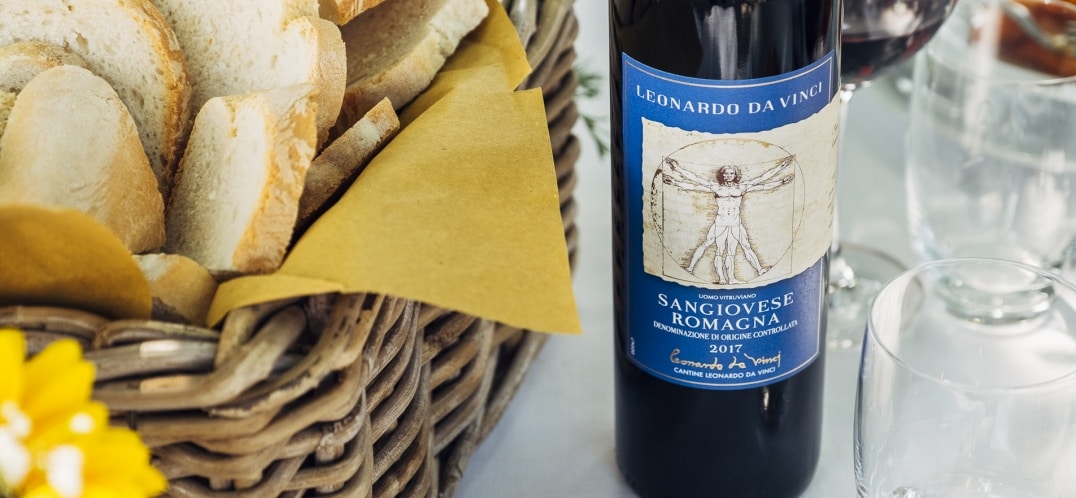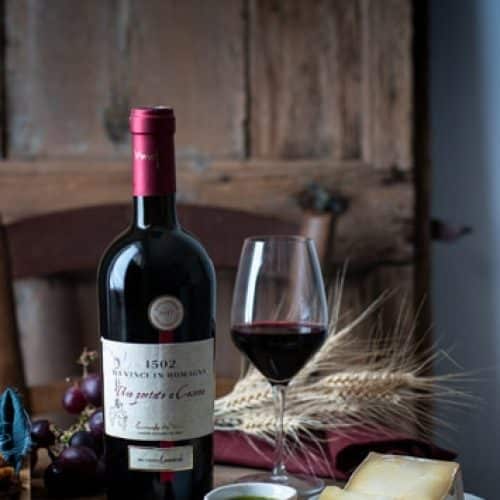Sangiovese is one of the most widespread and well-known vines in Italy, however its precise origins are still mysterious and there are various versions regarding its history. It is known to have been born in a limited area between Romagna and Tuscany. As Giordano Zinzani and Beppe Sangiorgi report in their book “Sangiovese, wine of Romagna”, an ancient notary deed of 1672 found in the State Archive of Faenza is the first document known today where the name Sangiovese is found. A lady, owner of the Fontanella estate located 400 meters above sea level, leased a vineyard to the parish priest of Pagnano: three rows of Sangiovese placed near her home.
Sangiovese di Romagna: storia
The origins of Sangiovese di Romagna must be sought further back in time, starting from the name, which could have mystical values related to the cult of Dionysus and the practice of the symposium – it’s possible that its name came from the Latin Sanguis Jovis (blood of the god Jupiter). Another origin of the name involves the village of Sant’Arcangelo where a convent of monks on the Monte Giove tended vineyards from which a fine red wine was obtained, called the blood of Monte Giove.
Another theory traces the name not to the god Jupiter but to the word ‘giogo’, meaning yoke, which also referred to the long and rounded top of a mountain, and consequently to sangiogheto (blood of the yoke), which could be a vine of the hills, such as those on the border between Romagna and Tuscany.
Sangiovese e Romagna: legame con il territorio
Romagna has no administrative boundaries, but it is a region whose borders are sentimental, and dictated by language, history and habits. Romagna begins in Imola and ends on the border Marche. In Romagna, the vine has always been called Sangiovese and has always been vinified in purity, while in Tuscany, for example, until the second half of the 19th century it was used exclusively in blends, such as Chianti.
The controlled denomination of origin (DOC) Romagna Sangiovese dates back to 1967. Sangiovese di Romagna was the 15th wine in Italy to be recognized as DOC and first for the Emilia Romagna region. Every year in October, the Giovin Bacco wine event in Ravenna rewards the best Sangiovese di Romagna.
Sangiovese di Romagna: caratteristiche e abbinamenti
In Romagna, Sangiovese is said to resemble its people: lively, frank and exuberant. A little rough at first glance, but then welcoming and warm. In fact, Romagna’s Sangiovese has more or less these characteristics. Its color is ruby red, sometimes with purple edges; the nose has a delicate perfume reminiscent of violet; the taste is harmonious, slightly tannic, with a pleasantly bitter aftertaste. It goes naturally with the Romagna cuisine of the hinterland, with rustic and simple flavors, such as home-made first courses based on meat sauce, roasts, and grilled meats, such as classic lamb castrato.








